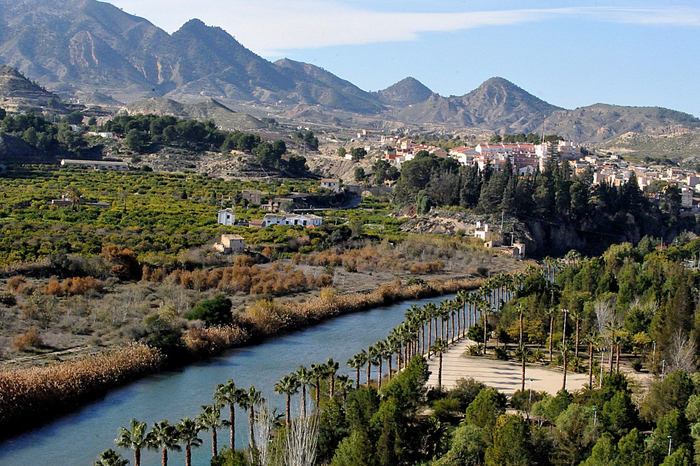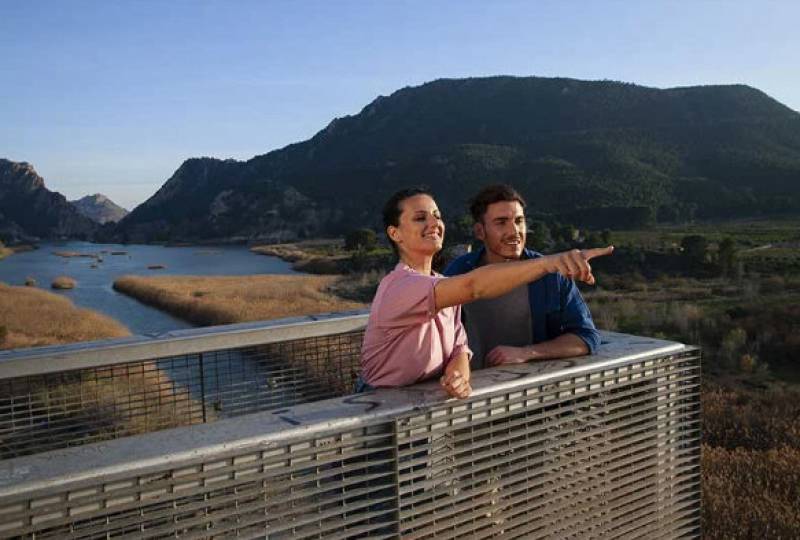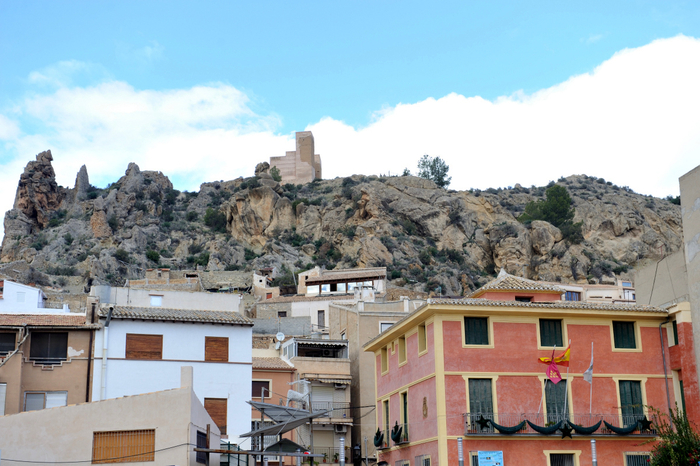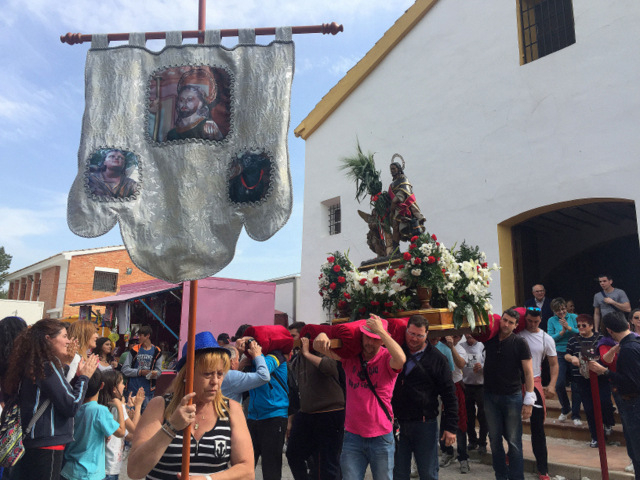- Region
- Águilas
- Alhama de Murcia
- Jumilla
- Lorca
- Los Alcázares
- Mazarrón
- San Javier
-
ALL AREAS & TOWNS
- AREAS
- SOUTH WEST
- MAR MENOR
- MURCIA CITY & CENTRAL
- NORTH & NORTH WEST
- TOWNS
- Abanilla
- Abarán
- Aguilas
- Alamillo
- Alcantarilla
- Aledo
- Alhama de Murcia
- Archena
- Balsicas
- Blanca
- Bolnuevo
- Bullas
- Cañadas del Romero
- Cabo de Palos
- Calasparra
- Camping Bolnuevo
- Campo De Ricote
- Camposol
- Canada De La Lena
- Caravaca de la Cruz
- Cartagena
- Cehegin
- Ceuti
- Cieza
- Condado de Alhama
- Corvera
- Costa Cálida
- Cuevas De Almanzora
- Cuevas de Reyllo
- El Carmoli
- El Mojon
- El Molino (Puerto Lumbreras)
- El Pareton / Cantareros
- El Raso
- El Valle Golf Resort
- Fortuna
- Fuente Alamo
- Hacienda del Alamo Golf Resort
- Hacienda Riquelme Golf Resort
- Isla Plana
- Islas Menores & Mar de Cristal
- Jumilla
- La Azohia
- La Charca
- La Manga Club
- La Manga del Mar Menor
- La Pinilla
- La Puebla
- La Torre
- La Torre Golf Resort
- La Unión
- Las Palas
- Las Ramblas
- Las Ramblas Golf
- Las Torres de Cotillas
- Leiva
- Librilla
- Lo Pagan
- Lo Santiago
- Lorca
- Lorquí
- Los Alcázares
- Los Balcones
- Los Belones
- Los Canovas
- Los Nietos
- Los Perez (Tallante)
- Los Urrutias
- Los Ventorrillos
- Mar De Cristal
- Mar Menor
- Mar Menor Golf Resort
- Mazarrón
- Mazarrón Country Club
- Molina de Segura
- Moratalla
- Mula
- Murcia City
- Murcia Property
- Pareton
- Peraleja Golf Resort
- Perin
- Pilar de la Horadada
- Pinar de Campoverde
- Pinoso
- Playa Honda
- Playa Honda / Playa Paraíso
- Pliego
- Portmán
- Pozo Estrecho
- Puerto de Mazarrón
- Puerto Lumbreras
- Puntas De Calnegre
- Region of Murcia
- Ricote
- Roda Golf Resort
- Roldan
- Roldan and Lo Ferro
- San Javier
- San Pedro del Pinatar
- Santiago de la Ribera
- Sierra Espuña
- Sucina
- Tallante
- Terrazas de la Torre Golf Resort
- Torre Pacheco
- Totana
- What's On Weekly Bulletin
- Yecla


- EDITIONS:
 Spanish News Today
Spanish News Today
 Alicante Today
Alicante Today
 Andalucia Today
Andalucia Today
article_detail
Date Published: 01/01/2015
The history of Blanca
The Moors played a vital role in the development of Blanca and the Ricote valley
There is little evidence of prehistoric settlement in Blanca, but it’s hard to believe that the fertile land next to the River Segura in the Ricote valley which attracted Moorish farmers could have failed to interest previous civilizations.
Known as Negra before the name was changed in the fourteenth century, the town of Blanca remained a Moorish enclave long after the Reconquista of Murcia in 1243, with religious tolerance being extended under the rule of the Order of Santiago, which lasted until the mid-19th century.
Since then, urban sprawl has been minimal and Blanca remains a mostly agricultural community, although in the early years of the twenty-first century it is becoming more and more popular, along with the rest of the Ricote valley, as a destination for tourists and adventure sports. Blanca has also begun to carve a niche for itself as a centre for artists and is attracting an increasingly “arty” crowd to its cultural events. At the same time, agricultural practices have been modernized and new crops have been grown since the water supply was guaranteed in 1979, much of the land around the town now planted with citrus.
Prehistoric Blanca
The municipality of Blanca in the northern part of central Murcia is relatively unusual in that not many remains of prehistoric human settlements have been found here, although the pleasant climate and the proximity of the River Segura make it almost inevitable that human habitation of this part of the Ricote valley must 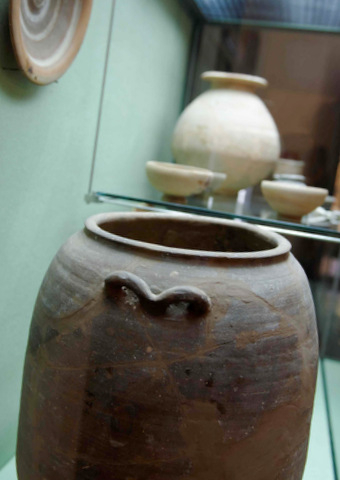 pre-date the earliest known evidence by a very long time.
pre-date the earliest known evidence by a very long time.
Prehistoric settlers generally opted for areas with guaranteed water supplies, good hunting and areas with strategic rock outcrops to offer protection, and there were certainly all of those elements present in Blanca, although so far the physical proof of settlement has failed to materialize. There are certainly notable prehistoric remains nearby (see Cueva de la Serreta in Cieza). The first remains of any note date from the Iberian period, which falls between 750 BC and the first century BC, when Iberian tribes built settlements at Bolvax in Cieza, Cabezo del Tío Pío in Archena and in many other locations across what is now the Murcia region. A site dating from between the fifth and second centuries BC at La Loma de la Tendida in Blanca confirms that the Iberians were also present here. One of the most important collections of Iberian artifacts in Spain can be found in Mula in the Cigarralejo museum, where a substantial Iberian burial ground has been found. Click to read more about the Iberians.
The Moors invade
However, the traceable history of modern Blanca really begins in the year 711, when the Moors began to invade southern Spain following the failure of the Visigoths (who picked up after the Roman Empire disintegrated) to 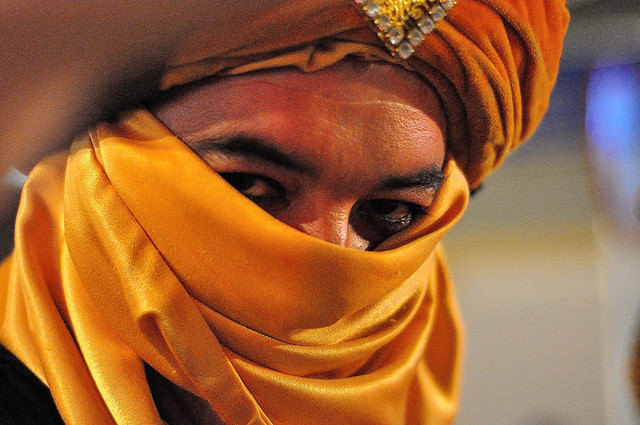 maintain a cohesive rule. The armed conflict began when Musa, the Moslem governor of northern Africa, ordered his troops to cross the Straits of Gibraltar, and General Tarik landed at Gebel Tarik (Gibraltar) before advancing into the south of the peninsula. Don Rodrigo, newly elected Visigoth King of Hispania (Spain) came to meet the invaders, but the Moors defeated the Visigoth army at the battle of Guadalete on 19th July 711, slaughtering the King and most of the Visigoth nobility. Islamic troops quickly completed their conquest of Visigoth Hispania, facing little opposition in their march to the Cantabrian coast and the foothills of the Pyrenees.
maintain a cohesive rule. The armed conflict began when Musa, the Moslem governor of northern Africa, ordered his troops to cross the Straits of Gibraltar, and General Tarik landed at Gebel Tarik (Gibraltar) before advancing into the south of the peninsula. Don Rodrigo, newly elected Visigoth King of Hispania (Spain) came to meet the invaders, but the Moors defeated the Visigoth army at the battle of Guadalete on 19th July 711, slaughtering the King and most of the Visigoth nobility. Islamic troops quickly completed their conquest of Visigoth Hispania, facing little opposition in their march to the Cantabrian coast and the foothills of the Pyrenees.
There was some Visigoth resistance in the south-east, though, led by Duke Teodomiro, the governor of the province of Aurariola (Orihuela), which included the modern-day provinces of Alicante, Albacete, Murcia and the northern part of Almería. Eventually, in 713, Teodomiro saw that he could no longer repel the Moors’ advance and found himself obliged to sign a peace treaty with Abd Al-Aziz, the chief of the Moorish army in the Eastern coastal region.
The terms of this treaty, known as the Pact of Teodomiro (or Pact of Tudmir) recognized Islamic sovereignty in Hispania, and handed over to the Moors the territories of Aurariola (Orihuela), Leucante/Lucentum (Alicante), Balantala (Villena or Valencia), Mula, Eliocroca (Lorca), Begastri (Cehegín) and Eio (Hellín or Elche), as well as establishing the payment of tributes in return for peace and religious freedom. By the same treaty Teodomiro was granted political autonomy in his government of the region, which was known as the kingdom of Tudmir, and remained in power throughout his lifetime, being succeeded by his son.
However, internal conflicts also spelled disaster for the new rulers and within 500 years there was trouble as the Christian armies of Aragón and Castile y León from northern Spain pushed down south and internal conflicts weakened the invaders. In 1228, Yusuf Ibn Hud, the military chief of Murcia, led an uprising from Negra against the Almohad caliphate. Although his rebellion was successful, after he died ten years later there was anarchy and chaos in the Kingdom of Murcia in the years prior to the Christian Reconquista in 1243.
The Reconquista as Negra becomes Blanca
By 1243 the Christian army of Prince Alfonso had succeeded in pushing the Moors back into the Kingdom of Granada and Murcia effectively surrendered in a peaceful take-over and became a Christian Castilian 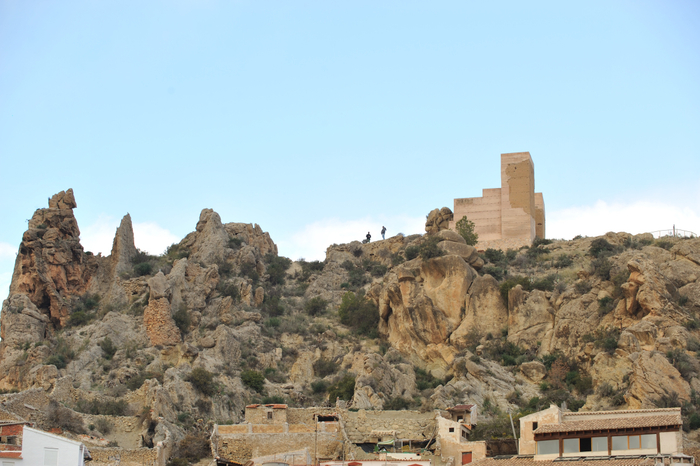 protectorate governed by Enrique Pérez de Arana and Pedro Peláez de Contreras. In 1252 Prince Alfonso came to the throne of Castile as Alfonso X, and although he became known as “El Sabio” the wise, for his scholarly and musical achievements, he showed little judgement with regards to the terms of the treaty under which the possessions, traditions and beliefs of Moorish inhabitants were to be respected in return for a peaceful handover. This treaty, the Pact of Alcaraz, had been designed to minimize bloodshed and recognize that many of those living in the area as Moslems had been farming the land and generating valuable food supplies (and taxes) for hundreds of years, but Alfonso abused the terms of the treaty and imposed such harsh restrictions on the Moslem residents that they rebelled, leading to the Mudéjar uprisings in the Ricote valley in 1264 and 1266. Once these rebellions had been quashed (with the help of Alfonso’s powerful father in law, Jaime of Aragón) Negra and the rest of the valley was put under under the control of the city of Murcia.
protectorate governed by Enrique Pérez de Arana and Pedro Peláez de Contreras. In 1252 Prince Alfonso came to the throne of Castile as Alfonso X, and although he became known as “El Sabio” the wise, for his scholarly and musical achievements, he showed little judgement with regards to the terms of the treaty under which the possessions, traditions and beliefs of Moorish inhabitants were to be respected in return for a peaceful handover. This treaty, the Pact of Alcaraz, had been designed to minimize bloodshed and recognize that many of those living in the area as Moslems had been farming the land and generating valuable food supplies (and taxes) for hundreds of years, but Alfonso abused the terms of the treaty and imposed such harsh restrictions on the Moslem residents that they rebelled, leading to the Mudéjar uprisings in the Ricote valley in 1264 and 1266. Once these rebellions had been quashed (with the help of Alfonso’s powerful father in law, Jaime of Aragón) Negra and the rest of the valley was put under under the control of the city of Murcia.
When Alfonso’s son and heir Fernando de la Cerda died in 1275 there was something of a power struggle among the rest of his children to decide who would succeed him on the throne, and it was in this context that the future King Sancho IV promised to reward the support of the important military knights Order of Santiago by giving them the whole of the Ricote valley if they took his side. This promise was made in 1281, and after he became king three years later he kept to it in 1285: in this way Negra was consigned to the rule of the Order along with the rest of the valley (and other parts of the Region of Murcia).
Apart from a brief interlude between 1296 and 1303, when Jaime II of Aragón invaded Murcia and awarded Blanca to Bernardo de Sarriá, the religious and military order were to remain the governors of the town right through to the nineteenth century, overseeing the agricultural activity, collecting taxes and ensuring the townsfolk were observant of the Christian faith.
The document by which governorship of the town was handed back to the Order of Santiago on 19th September 1303 is the last in which it is known to have been referred to as Negra: by 1383, when a Moor from the town was the subject of court proceedings, the name of Blanca appears to have been officially adopted.
Blanca under the Order of Santiago
During the first years of the Order of Santiago’s rule in Blanca, their efforts were mainly directed at increasing the yield from agricultural activities in the Ricote valley. At the same time the remaining Moors, who were 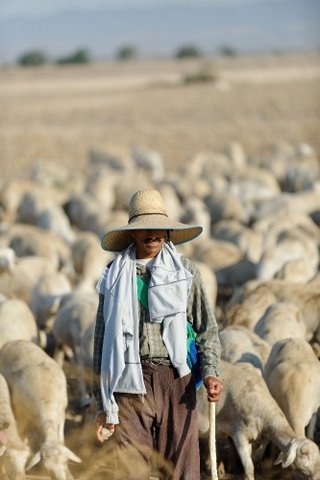 referred to as “Mudéjars”, were converted to Christianity, (in theory, although in practice many retained their own religion) and in general terms their presence was tolerated in all parts of the valley. It has to be understood that at this point in history there was generally a lower level of population, and the loss of agricultural labour would have resulted in food shortages.
referred to as “Mudéjars”, were converted to Christianity, (in theory, although in practice many retained their own religion) and in general terms their presence was tolerated in all parts of the valley. It has to be understood that at this point in history there was generally a lower level of population, and the loss of agricultural labour would have resulted in food shortages.
By this point the Moors who refused to appear to convert to Christianity had been pushed into their last strongholding of the Kingdom of Granada, from which they continued to harry the Christian monarchs of what is now Murcia. Border raids were a regular occurrence, and as the arguments over the succession caused political instability in Murcia, the Moorish agriculturalists finally decided to move to Granada with the Moorish troops after a raid into the kingdom of Murcia. After demanding financial reward for returning to Blanca they did so, but left again in 1477 following the sack of Cieza. (Their former settlement in Cieza is known as Medina Siy-asa and is a remarkably intact Moorish ruin which can still be visited today).
This left Blanca practically unpopulated, but the Mudéjars returned to the whole valley except Abarán after the Reconquista of Granada in 1492 when the Moors were kicked out of Spain altogether.
One of the main policies of the Catholic Monarchs in the late 15th and early 16th centuries was to impose the Catholic religion on all those living in their kingdom, but in Blanca the situation remained both complicated and conflictive. The Jews were expelled from Spain completely, and it’s interesting to note that in cities such as Lorca in the south-west of Murcia, this led to the Jewish quarter being completely abandoned, and the Mudéjars who wished to stay were obliged to convert to Christianity, being known from this point onwards as “Moriscos”.
Similarly, a papal bull issued by Julius II in 1505 converted the mosques of the Ricote valley into Christian churches, and this conversion was completed in Blanca by 1507. When it transpired that despite changing their religion the Moorish inhabitants were still treated as secondary citizens in terms of their rights and taxation, they staged a rebellion in 1517 which was not overcome until the following year. However in many other parts of southern Spain depopulation was a major problem and efforts were made to bring Christian settlers down from the north to repopulate areas which had formerly been worked by Moorish agriculturalists.
For the rest of the century Blanca flourished, and gradually became the most important of the towns in the Ricote valley. The population increased, and by 1591 it was named a “villazgo”, with the right to elect its own Mayor and municipal government.
Blanca the 17th to the 19th centuries
In 1613, though, this prosperity was brought to an abrupt end when Felipe III decreed that all the Moriscos should be expelled. Some 2,500 inhabitants from the Ricote valley were forced to leave their homes and were 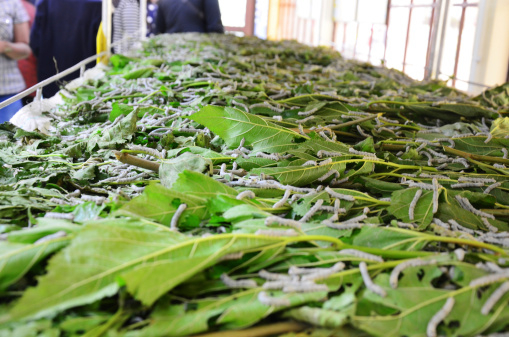 deported, and as a result of the number of residents in Blanca falling suddenly to around 300 the local agriculture was effectively wiped out at a stroke. When the land previously worked by the Moriscos was auctioned it was acquired by noble families such as the Castillos and the Molinas, and during the century the church was rebuilt and dedicated to San Juan Evangelista (St John the Baptist).
deported, and as a result of the number of residents in Blanca falling suddenly to around 300 the local agriculture was effectively wiped out at a stroke. When the land previously worked by the Moriscos was auctioned it was acquired by noble families such as the Castillos and the Molinas, and during the century the church was rebuilt and dedicated to San Juan Evangelista (St John the Baptist).
Within fifteen years almost half of the exiled Moriscos had returned, and a hundred years later the population had recovered to over 700. The growing of fruit trees, among them the mulberries favoured by silkworms, allied to transhumance pasture land, ensured further growth to almost 1,400 people by 1786, a period during which Murcia flourished.
Again, though, prosperity was followed by depression, as the Peninsular War against Napoleon caused enormous hardships throughout Spain. The armies of Napolean provoked widespread damage, burning churches and destroying many important buildings.
The status of “villa” was awarded to Blanca in 1819, but in 1828 the whole of Murcia was ravaged by an outbreak of yellow fever, again, substantially reducing the agricultural population. At the height of the epidemic the cathedral chapter of Murcia chose Blanca as a refuge from the misery in the city, and according to local tradition the town remained unaffected by the disease due to the intervention of San Roque, who was promptly named patron saint of the municipality.
The 666-year rule of the Order of Santiago in Blanca finally ended in 1851, and the turbulent years of the second half of the 19th century saw the gradual modernization of the municipality. In 1856 a bridge over the river was completed, in 1869 a road to the railway station was built, by 1894 public street lighting had been inaugurated, and just three years later the first telephone was connected in the town.
The twentieth and twenty-first centuries in Blanca
Since then, in many ways, Blanca has failed to grow in the same way as other parts of Murcia. The population has increased by only 2,000 to 6,500 in the last hundred years, during which time the demand for esparto 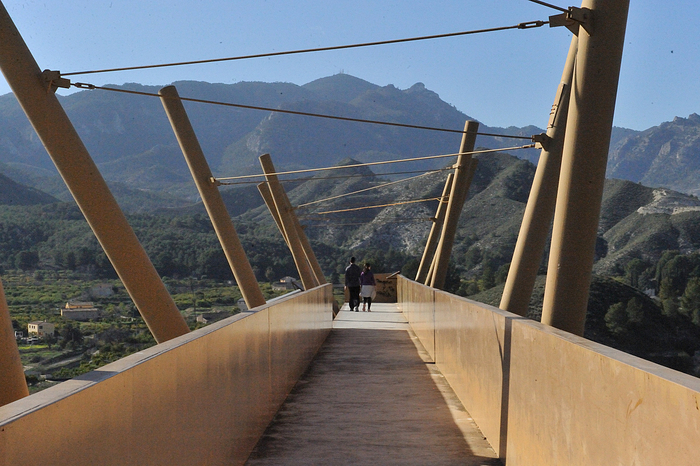 grass and wood has declined significantly, robbing the economy of two of its previous pillars. On top of this, Blanca also suffered some of the effects of the Civil War, during which both the La Milagrosa convent and the church were attacked and a large number of religious works of art were destroyed, a similar situation to other parts of the region.
grass and wood has declined significantly, robbing the economy of two of its previous pillars. On top of this, Blanca also suffered some of the effects of the Civil War, during which both the La Milagrosa convent and the church were attacked and a large number of religious works of art were destroyed, a similar situation to other parts of the region.
Following the years of dictatorship, change has been drastic.
The Tajo-Segura water supply canal was completed in 1979, which resulted in a change to the traditional agricultural practices undertaken with citrus and stone fruit trees and vines now being cultivated in the Segura valley. There has also been a slow growth in the number of residential homes being built and the area has started to attract the attention of weekend holidaymakers from the city, drawn by the beauty of the area. The growth of rural tourism, interest in the area from foreign property buyers and an increasing offering of cultural events have all contributed to a change in revenue streams for the area, and Blanca, and the Ricote Valley, are finally being recognized as one of the most attractive areas of the Murcia region.
article_detail
Find more information by AREA, TOWN or URBANISATION .....
Cabo de Palos
Cartagena
El Carmoli
Islas Menores and Mar de Cristal
La Manga Club
La Manga del Mar Menor
La Puebla
La Torre Golf Resort
La Union
Los Alcazares
Los Belones
Los Nietos
Los Urrutias
Mar Menor Golf Resort
Pilar de la Horadada
Playa Honda / Playa Paraiso
Portman
Roldan and Lo Ferro
San Javier
San Pedro del Pinatar
Santa Rosalia Lake and Life resort
Terrazas de la Torre Golf Resort
Torre Pacheco
Cartagena
El Carmoli
Islas Menores and Mar de Cristal
La Manga Club
La Manga del Mar Menor
La Puebla
La Torre Golf Resort
La Union
Los Alcazares
Los Belones
Los Nietos
Los Urrutias
Mar Menor Golf Resort
Pilar de la Horadada
Playa Honda / Playa Paraiso
Portman
Roldan and Lo Ferro
San Javier
San Pedro del Pinatar
Santa Rosalia Lake and Life resort
Terrazas de la Torre Golf Resort
Torre Pacheco
Aguilas
Aledo
Alhama de Murcia
Bolnuevo
Camposol
Condado de Alhama
Fuente Alamo
Hacienda del Alamo Golf Resort
Lorca
Mazarron
Puerto de Mazarron
Puerto Lumbreras
Sierra Espuna
Totana
Aledo
Alhama de Murcia
Bolnuevo
Camposol
Condado de Alhama
Fuente Alamo
Hacienda del Alamo Golf Resort
Lorca
Mazarron
Puerto de Mazarron
Puerto Lumbreras
Sierra Espuna
Totana
Abanilla
Abaran
Alcantarilla
Archena
Blanca
Corvera
El Valle Golf Resort
Hacienda Riquelme Golf Resort
Lorqui
Molina de Segura
Mosa Trajectum
Murcia City
Peraleja Golf Resort
Ricote
Sucina
Abaran
Alcantarilla
Archena
Blanca
Corvera
El Valle Golf Resort
Hacienda Riquelme Golf Resort
Lorqui
Molina de Segura
Mosa Trajectum
Murcia City
Peraleja Golf Resort
Ricote
Sucina
Urbanisations
CamposolCondado de Alhama
El Valle Golf Resort
Hacienda del Alamo Golf Resort
Hacienda Riquelme Golf Resort
Islas Menores and Mar de Cristal
La Manga Club
La Torre Golf Resort
Mar Menor Golf Resort
Mazarron Country Club
Mosa Trajectum
Peraleja Golf Resort
Santa Rosalia Lake and Life resort
Terrazas de la Torre Golf Resort
La Zenia
Lomas de Cabo Roig
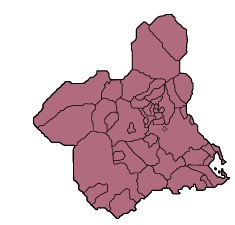
Important Topics:
CAMPOSOL TODAY Whats OnCartagena SpainCoronavirusCorvera Airport MurciaMurcia Gota Fria 2019Murcia property news generic threadWeekly Bulletin
CAMPOSOL TODAY Whats OnCartagena SpainCoronavirusCorvera Airport MurciaMurcia Gota Fria 2019Murcia property news generic threadWeekly Bulletin
Contact Murcia Today: Editorial 966 260 896 /
Office 968 018 268

